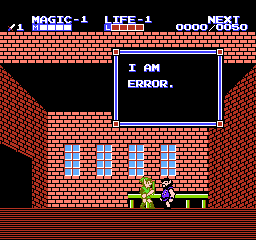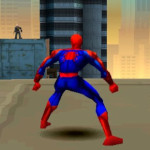Here’s part two of my roundup of games on the Nes Classic mini. Again my opinions range from somewhat well informed, to mostly ignorant. If you’d like more extensive reviews, I suggest you go visit our friends over at Just Games Retro.
Metroid – 1986
Platform game, notable for its structure. Instead of a set of discrete levels, the game is spread across a number of connected caverns. You have quite a bit of freedom to explore your surroundings, but, some areas are inaccessible until you gain a particular powerup. For example the famous morph ball lets you enter narrow channels, and bombs let you destroy some floor blocks.
These games tend to involve a lot of roaming, careful searching, and backtracking when you realise the item you just picked up will get you past an obstacle you ran into an hour ago. Castlevania would later take up this format, giving rise to a subgenre we call Metroidvania.
This is the one I’ve been playing the most lately on my Classic Mini. It’s quite tough; partially because it lacks features we came to expect in later metroids, but also just because gamers were made of sterner stuff back then. While you have infinite lives, when you die you respawn at the start of a zone with a tiny amount of health. There are no recharge stations so you have to grind easy enemies for health boosts. Also there’s no map, so it’s really easy to get lost in all those samey-looking vertical shafts.
Finally you can’t actually shoot any enemy below waist height, until you get a late-game upgrade. Which is a little ridiculous. So your only option is to try and drop bombs in the enemy’s path.
That’s me complaining about old games being difficult, but, I think Metroid is still quite compelling. There’s a real sense of being on a dangerous desecent into a mysterious underworld. The game gets off to a energetic start – the music in the starting zone is upbeat, and you quickly grab the first powerup. As you delve deeper though, you notice none of the creatures you encounter are remotely humanoid. The shafts seem to drop forever deeper beneath the surface of Zebes. The soundtrack switches to themes that are more haunting, or menacing. The eerie caverns are an utterly alien domain, and you’re an intruder here.
Also on a technical note, the game was impressive at the time for having two-way scrolling, switching between horizontal and vertical as you move from one chamber to another.
Bubble Bobble – 1986
Adorable little dinosaurs trap monsters in bubbles. Another “each level is one screen” arcade game, where you do the same basic task over and over, but it’s very appealing and the two-player co-op mode helps. I may have been humming along to the tune.
Castlevania – 1986
Before the series went Metroidvania. A straight up, linear platform game that takes its themes from classic horror movies. You must fight your way through a castle full of assorted monsters and undead creatures, on the way to a showdown with Dracula himself. You have an upgradeable whip for your main weapon, and interchangeable secondaries like axes and holy water. This one is still fun, albeit challenging as health recharges are few and far between.
Castlevania 2 – 1987
I’ve not really played this, but as I understand it, Castlevania 2 is sort of a Metroidvania. Not exactly the format we know today but it is more nonlinear, with town section you can visit in between levels to buy supplies and talk to NPCs.
Legend of Zelda – 1986
Top-down action-adventure, maybe kind of an RPG depending on how you look at it. Features an expansive wilderness, around which are scattered several dungeons containing more dangerous threats but also useful artifacts. The ultimate goal is to seek the sacred triforce, and rescue the princess Zelda from the villain Ganon. Spawned Nintendo’s second most famous franchise, with incarnations on every console. The latest one, Breath of the wild, is currently the only real reason to buy the new Switch.
It’s all a bit minimalist compared to sequels, for sure. There’s little story here, you’re just a guy on a quest. There are no towns, in fact few NPCs of any sort. It’s completely over-run with monsters, and the only signs of human life are a few shopkeepers and hermits skulking in caves. There’s also no real in-game map, although to be fair it originally came with one on paper. Also the inability to swing your sword diagonally is often really annoying.
That said, this remains possibly my famous NES game, and it’s another one I’ve actually put several hours into these past few weeks. The land of hyrule still promises adventure, letting you freely roam its lakes, forests and mountains. I don’t even mind the lack of people; the feeling of isolation has its own appeal. You’re making your way into a land that civilisation has mostly ceded to monsters, and only a few adventurers and travellers dare venture here. Meanwhile dungeons are mysterious, forboding, full of perils and treasure, leftover ruins of whoever used to live here.
Also, the wide arsenal of secondary weapons was a winning design move. You have the sword for your main attacks, but adjust your secondary according to circumstances. Bombs on their timer let you place one then concentrate on dodging enemies. Boomerang stuns (and can go diagonally!). The bow costs money for each shot (I guess that took less memory than having an arrow stash) but is often your best bet for dealing damage at a distance.
Zelda 2 – 1987
The black sheep of the family. This first sequel uses a map screen, jumping to side-scrolling action sections when you enter a town or palace, or encounter random wandering monsters. It’s also the most overt in use of RPG systems – you gain experience points for killing enemies, and level up every time you gather sufficient points. Meanwhile the secondary weapons were replaced with a set of magic spells.
Tougher than the first game. If you lose all your lives you can continue, but are thrown right back to the starting map location. Combat requires a higher degree of alertness and dexterity than the top-down zeldas, since you can strike and block low and high, but so can some enemies. Needless to say, I am bad at this.
Also, it turns out Hyrule is a lot larger than we first thought – it’s suggested that the region we explored in the first game is just one patch of the wider kingdom. So there are indeed towns and people elsewhere (even if monsters still fill every field and forest), useful for hearing clues, learning spells, recharging health and meeting this guy:

There are probably reasons the series never went back to this format. Zelda 3 on the SNES was based on the original, and every subsequent sequel either did the same or starting with Ocarina of Time used 3rd-person 3D. Still, this one is still worth an attempt, an epic quest for a brave adventurer.
Fun fact: chronologically, Zelda 1 and 2 are actually the last two games in the series, set centuries after Ocarina and Skyward Sword.
StarTropics – 1990 (US)
It’s like Legend of Zelda, except set on tropical islands somewhere here on earth, and you’re a kid with a yo-yo. Also you can jump.
Movement takes place in discrete steps around a grid, which I have mixed feelings about. Some actions feel easier, like co-coordinating jumps across water (where falling in means instant death), or dodging boss projectiles. On the other hand, avoiding those goddamn bat things is frustrating. What doesn’t help is, several years after Zelda, you still can’t attack diagonally.
Grumbles aside, I’ve cleared the first couple of dungeons and am intrigued enough to continue. The setting is a bit different from fantasy, at least.
Ice Climber – 1985
Break ceilings above you, climb. An early title that I think serious Nintendo fans look back on fondly, but is largely forgotten otherwise.
Pac-Man – 1984
Well, the historical importance of Pac-Man is undeniable. He was immensely successful, and one of gaming’s first real mascots. That said, I don’t think we particularly associate him with Nintendo? The original arcade game was released in 1980, so pre-dated the NES by a few years, and was later ported (or copied) to just about every system in existence.
I don’t have a lot to say about it myself – it’s probably clear by now that I don’t spend much time on the oldest games. It seems to have been around 85, 86 that gaming developed the complexity and features that grant more lasting appeal. That’s speaking in terms of my personal tastes of course. If you can get enjoyment out of the ancients, more power to you!
Punch-Out!! Featuring Mr. Dream – 1987
Originally featuring Mike Tyson as the final fight, but not anymore, I guess he fell out of favour. Another on the “not played” pile, although one I’d like to try sometime. The only boxing game I ever did play was EA Fight Night, against Rik. Where the two of us clubbed ineffectually at each other for 10 minutes while the commentator sounded so thrilled, I assumed he was watching a different game entirely. This one doesn’t have 2-player sadly.
Ghosts ‘n Goblins – 1986
Action platformer, destroy lots of spooky monsters. Really tough. You can take two hits, on the first you guys’s impressive looking but flimsy armour shatters and he runs around in his pants.
Super C 1990
Only played this for about 10 minutes. I’m a bit more familiar with the SNES sequel. In this sort of fast and frantic platform shooter, I tend to die quickly and give up. That said, I can see the simultaneous two-player mode having potential.
Ninja Gaiden 1988
Again I’ve only seen the first couple of levels of this one. Sorry, I’m not really interested in old games. I’m a fake geek guy.
Mega Man 2 1989
Platform shooters starring an amiable little blue android. You fight your way to eight robot masters, each of whom has a level themed around themselves. So Metal Man is in a world of gears and pulleys , Air Man is up in the clouds. Upon beating them you take their weapon. Once all are down, you assault the stronghold of their creator, Dr Wily. The robot master stages can be done in any order, but since each is vulnerable to a certain weapon, there’s an optimum path through the game.
This one is still greatly enjoyable. The artwork is colorful and cartoony, the levels memorable and the music incredibly catchy. Now, this is just one of a series that went all the way up to six(!), but it’s generally regarded as the most popular.



 Posts
Posts